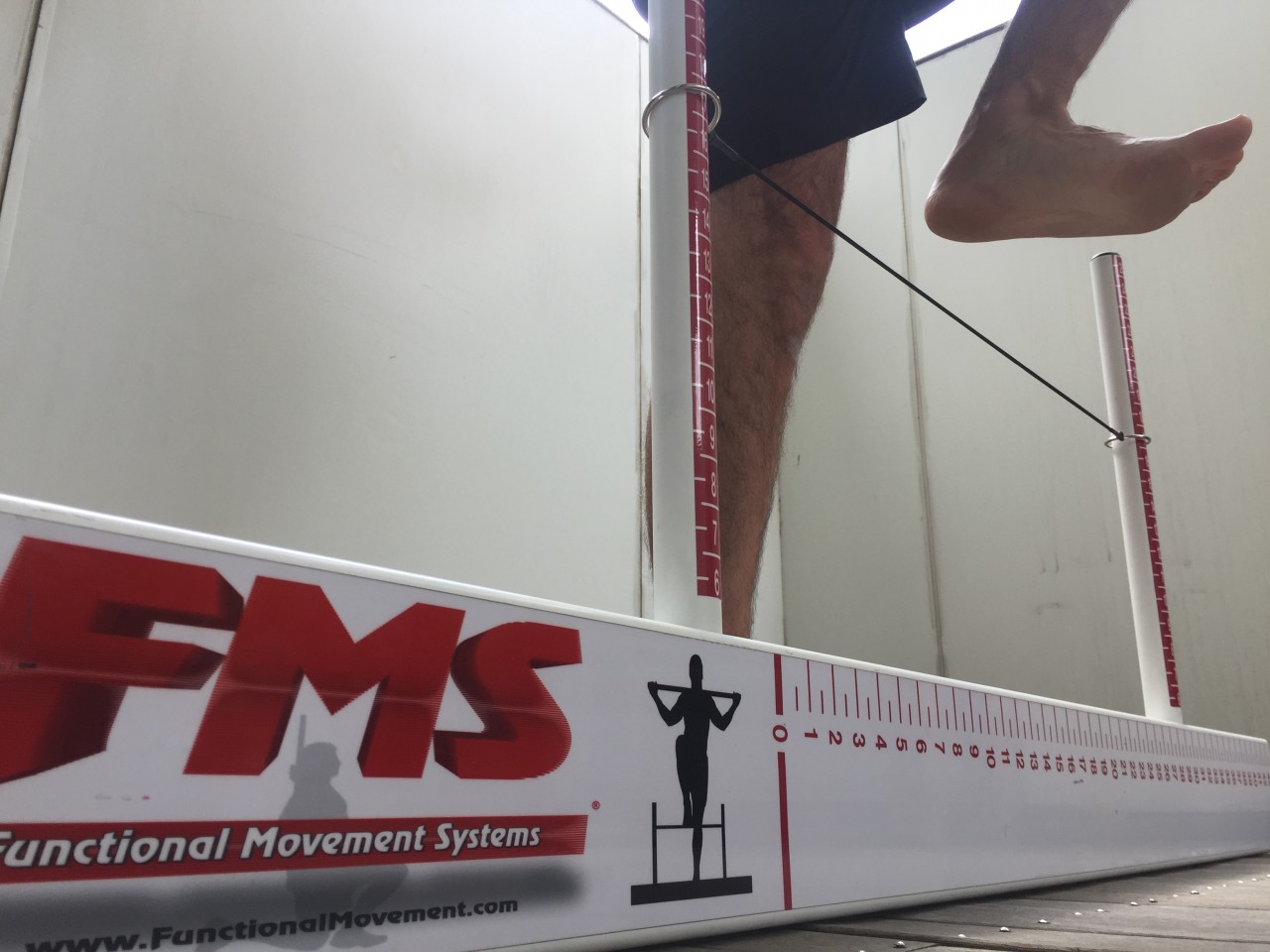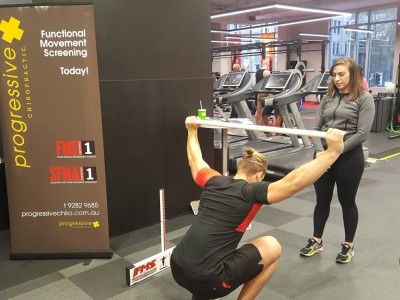
Functional Movement Screen at gyms and clubs across Sydney
Functional Movement Screen
Progressive Chiropractic has been teaming up with Complete Chiropractic Carringbah and superstar PT, Samantha Holland to deliver the FMS at gyms and fighting clubs across Sydney. It gives people the chance to take a snap shot of where they’re at with their basic fundamental movement capacity, without having to go to the trouble of making an appointment to see a chiropractor or physio.
What is the Functional Movement Screen?
The FMS was developed by the guys at Functional Movement Systems. It is, as the name implies, a movement screen. This is an important distinction from a test or assessment. A screen is used to screen for things. We get lots of things screened. We might get our eyesight screened for example. If we don’t pass the screen, it won’t tell us what’s wrong with our eyes, only that we need to go and get them tested and looked at by an optometrist. We may get our blood pressure screened. Again, it won’t tell you why you have high blood pressure, only that you do, and you should probably see a medical doctor for further testing. The movement screen won’t tell you exactly what’s wrong, it will tell you if you need to get anything assessed in any more detail.
The FMS consists of 7 fundamental movements that test general mobility and motor control. Each test is marked 0-3.
0= Pain with the movement — Possibly a medical problem
1= Unable to complete a fundamental movement pattern
2= Able to complete a fundamental movement pattern with some compensation
3 = Able to complete a fundamental movement pattern without any compensations.
The purpose of the Functional Movement Screen is to:
- Set a movement baseline
- Identify major problems with basic movement patterns
What are major problems? In order of priority, they are:
- Pain with movement (scored as a 0 on the Functional Movement Screen)
- Inability to perform a simple movement pattern even when allowed a compensation (score of a 1 on test)
- Major asymmetry with movement
Why is this helpful?
Identifying pain in a fundamental movement pattern is highly associated with an increased risk of injury and should be addressed by a medical professional for proper diagnosis. This includes chiropractors, physios, osteo, and sports doctors.
Identifying problems with fundamental movement capacity can highlight problems with training programming and exercise selection. It provides a baseline from where an athlete can measure themselves along with other performance metrics such as sprint times, max weight lifts etc.
While not a good predictor for injury by itself, there is evidence to suggest that good movement capacity is related to more resilient and adaptable athletes. Many people just don’t know where they’re at.
What we’ve seen…
We’ve been to a lot of different gyms and clubs now. Huge commercial chains, small boutique gyms, a bunch of fighting clubs, and everything in between and what we’ve found, across the board, is that
how people train, affects how people move.
Training on machines only – You’re more likely to have trouble with overall stability.
Power lifters – You’re more likely to have good trunk stability in one plane but not in rotation.
Fighters – Tend to have reduced shoulder mobility
Runners – Tend to have reduced leg mobility.
Some of these “limitations” are actually good when it comes to a particular sport at high levels and we don’t necessarily want to change them. But for the average athlete, day to day life is as much a priority as is their sport. So while tight legs might serve a runner, they might also be a limiting factor when it comes to picking up kids from the ground without back pain. Everyone is different, and everyone’s life demands are unique.
The best part about the screens that I’ve found is that
it starts a conversation about movement with people.
When people see their limitations, they might be surprised, and they often don’t know what to do. They may be diligently getting into the gym 3-4 times a week and still be lacking fundamental movement capacities. This is where we can help. Our team includes Sports Chiropractors, and a Personal Trainer that are all trained in functional movement. With a few simple tweaks to someone’s training, people can make astounding changes to their movement capacity.
If you’ve got a sporting club or gym that you’d like us to come along to, let us know. You can call or email the practice.


